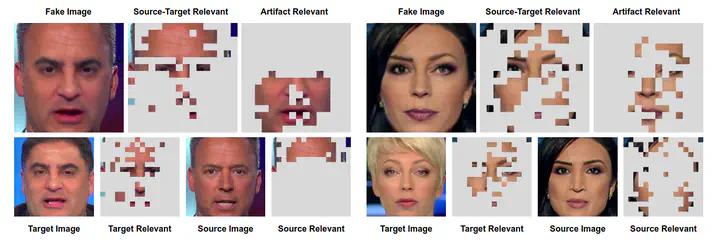 The relationship between source/target-relevant visual concepts and artifact-relevant visual concepts.
The relationship between source/target-relevant visual concepts and artifact-relevant visual concepts.Abstract
This paper aims to interpret how deepfake detection models learn artifact features of images when just supervised by binary labels. To this end, three hypotheses from the perspective of image matching are proposed as follows. 1. Deepfake detection models indicate real/fake images based on visual concepts that are neither source-relevant nor target-relevant, that is, considering such visual concepts as artifact-relevant. 2. Besides the supervision of binary labels, deepfake detection models implicitly learn artifact-relevant visual concepts through the FST-Matching (i.e. the matching fake, source, target images) in the training set. 3. Implicitly learned artifact visual concepts through the FST-Matching in the raw training set are vulnerable to video compression. In experiments, the above hypotheses are verified among various DNNs. Furthermore, based on this understanding, we propose the FST-Matching Deepfake Detection Model to boost the performance of forgery detection on compressed videos. Experiment results show that our method achieves great performance, especially on highly-compressed (e.g. c40) videos.